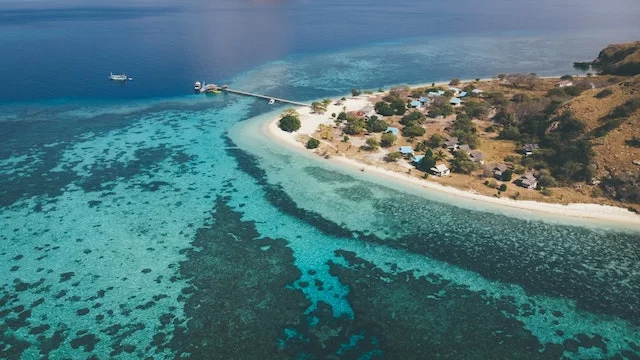If you’ve ever wondered what language is spoken in Argentina, you’re not alone. Many travelers, language lovers, and culture enthusiasts ask this exact question. The simple answer is: Spanish is the official language of Argentina.
But don’t stop reading just yet—because Argentina’s way of speaking Spanish is anything but ordinary. It has unique sounds, expressions, and even different vocabulary than what you might hear in Spain or Mexico. And if you’re planning a visit or just curious about the country, you’ll want to understand why the Argentinian Spanish dialect stands out from the rest.
So let’s dive deep into the languages spoken in Argentina, how they evolved, what makes them unique, and how you can prepare to understand and even speak like a local.
🌍 A Quick Overview: What Is the Official Language of Argentina?
Argentina is a Spanish-speaking country. In fact, Spanish (or Castellano, as many Argentines call it) is the official language of Argentina. It’s used in:
- Government and official documents
- Schools and universities
- Newspapers, TV, and radio
- Everyday communication
However, the story doesn’t end there. Argentina is a culturally rich and diverse country, and as such, other languages are also spoken in Argentina, including:
- Italian
- German
- Quechua (an Indigenous language)
- Guaraní
- English
- Arabic
- And more!
Let’s explore how these languages fit into the cultural puzzle.
🇦🇷 Why Do People Say “Castellano” Instead of Spanish in Argentina?
Here’s something that might surprise you: in Argentina, you’ll often hear people say they speak Castellano instead of “Español.”
But what’s the difference?
The term Castellano refers to the Castilian dialect, which originated in the Castile region of Spain. Over time, it evolved and spread to Latin America, becoming the standard form of Spanish in many countries, including Argentina.
Argentinians proudly use Castellano to emphasize their unique version of Spanish. It’s not just about where the language came from—it’s also a reflection of how it has changed and developed over centuries.
🧠 Let’s Talk Dialects: What Is Rioplatense Spanish?
The type of Spanish spoken in Argentina—especially in Buenos Aires and surrounding areas—is known as Rioplatense Spanish (or Español Rioplatense).
🗺 Where is it spoken?
Rioplatense Spanish is primarily spoken in:
- Buenos Aires
- Montevideo (Uruguay)
- Eastern Argentina
- Parts of southern Argentina and Paraguay
💬 What makes it different?
There are several features that make Rioplatense Spanish stand out:
- Vos Instead of Tú
- Argentinians don’t use tú (you); they use vos. This is called voseo.
- Example:
- Spain: ¿Cómo estás tú?
- Argentina: ¿Cómo estás vos?
- Example:
- Unique Pronunciation of LL and Y
- In most Spanish-speaking countries, “ll” and “y” are pronounced like a soft “y” in “yes.” But in Argentina, they’re pronounced like the “s” in “measure” or “zh.”
- Example:
- “Llave” (key) sounds like “zhah-veh.”
- Example:
- Intonation That Sounds Almost Italian
- Due to the huge wave of Italian immigration in the 19th and 20th centuries, the melody of Argentinian speech sounds very expressive and somewhat Italian.
🎙️ Anecdote: A Tourist’s Confusion
When Anna, a Spanish student from Mexico, visited Buenos Aires for the first time, she was shocked.
“I thought I knew Spanish!” she laughed. “But when my taxi driver said, ‘¿A dónde vas, che?’ I had no idea what he meant.”
That phrase, by the way, means “Where are you going, buddy?”—a perfect example of Rioplatense slang in action.
👨👩👧👦 Why Are There So Many Language Influences in Argentina?
To understand why Argentinian Spanish is so different, you need to look at Argentina’s immigration history.
🌍 A Country Built by Immigrants
Between 1850 and 1950, Argentina received millions of immigrants, especially from:
- Italy
- Spain
- Germany
- Russia
- Poland
- Lebanon and Syria
This mix of cultures had a major impact on how people in Argentina speak. Italian, in particular, heavily influenced the intonation and vocabulary of modern-day Argentinian Spanish.
🗣️ Other Languages Spoken in Argentina
Though Spanish dominates, there are several other languages spoken in Argentina, either by immigrant communities or Indigenous peoples.
1. Italian
- Once spoken by over 60% of immigrants
- Influences many Argentine idioms and expressions
- Still spoken in some households today
2. German
- Especially in the provinces of Córdoba and Misiones
- Maintained by German-descended communities
3. Quechua
- An Indigenous language of the Andes
- Spoken in northwestern Argentina, especially in Jujuy and Salta
4. Guaraní
- An official language of Paraguay
- Spoken near the northern borders
5. English
- Commonly taught in schools
- Widely spoken in tourist areas and by the younger population
6. Welsh
- Spoken in parts of Patagonia, particularly in Chubut Province
- Preserved by a small community descended from Welsh settlers
📚 Step-by-Step Guide: How to Prepare to Understand Argentinian Spanish
If you’re learning Spanish or planning to visit Argentina, here’s a step-by-step guide to help you get comfortable with Rioplatense Spanish:
Step 1: Learn Basic Spanish First
Start with the standard Spanish used in Latin America or Spain. Apps like Duolingo, Babbel, or Rosetta Stone are great places to begin.
Step 2: Familiarize Yourself with the Voseo
Understand how vos changes verb conjugations. For example:
InfinitiveTú formVos form
Hablar Tú hablas Vos hablás
Comer Tú comes Vos comés
Vivir Tú vives Vos vivís
Step 3: Practice Rioplatense Pronunciation
Watch Argentine TV shows, YouTube channels, or movies like:
- El Secreto de Sus Ojos (Oscar-winning film)
- Casi Ángeles (Popular teen series)
- La Casa del Mar
This helps you get used to the “zh” sound and musical intonation.
Step 4: Learn Some Local Slang
Here are a few must-know Argentinian expressions:
- Che – Hey / Dude / Friend
- Boludo – Idiot or buddy (depending on tone)
- Laburo – Work (instead of trabajo)
- Quilombo – Mess or chaos
- Mina – Girl
Step 5: Use Language Exchange Tools
Try Tandem or HelloTalk to chat with real Argentinians and improve your fluency.
📈 How Many People Speak Spanish in Argentina?
According to government data and linguistic research, over 95% of Argentina’s population speaks Spanish as their first language. That’s over 44 million people!
However, bilingualism is not uncommon. Many people also speak Italian, English, or an Indigenous language as a second language.
🎓 What Spanish Do They Teach in Argentinian Schools?
In Argentinian schools, children learn Rioplatense Spanish, but they are also taught standard grammar and vocabulary used throughout Latin America. So while the slang and accent might be unique, the core of the language is the same.
🛫 Why Does This Matter for Travelers and Expats?
If you’re planning a trip to Argentina—or considering moving there—it’s essential to know that while you’ll be understood with standard Spanish, Argentinian Spanish might sound very different.
But don’t worry. Most Argentinians are patient and friendly with foreigners. They’ll appreciate your effort to understand their version of Spanish, and might even teach you a few local phrases.
📣 Final Thoughts: So, What Language Is Spoken in Argentina?
Let’s sum it all up:
- The official language of Argentina is Spanish, known locally as Castellano.
- The primary dialect is Rioplatense Spanish, famous for its Italian-sounding intonation, use of voseo, and unique pronunciation.
- Thanks to its rich immigration history, Argentina is also home to languages like Italian, German, Quechua, Guaraní, and Welsh.
- Knowing standard Spanish is enough to get by, but learning a few local phrases will make your experience far more enjoyable.













Leave a Reply